Anyone fancy a trip out? This week I left my own garden for a lockdown trip to the Ragpits nature reserve at Aston Clinton to share a different landscape with you all, together with some wild orchids.
A few days ago a friend told me about this magical place, filled with wild orchids. I never knew it was here despite the fact I’ve driven past it hundreds of times, on my way to work and when visiting my late father and step mother.
Sadly I didn’t have my fabulous wild flower identification book with me at the time so my IDs are retropective but hopefully accurate. Anyone looking to learn more about wildflowers could do worse than buy the Collins Complete Guide to British Wildflowers by Paul Sterry (ISBN 978-0-00-723684-8)
June is the best time for orchids here but I could see evidence of other pretty wildflowers so I will be sure to visit again at other times of year, book in hand.
Chalk Ragpits Nature Reserve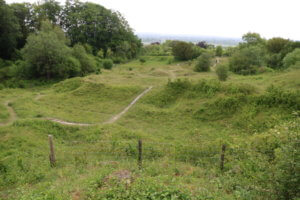
This site near Aston Clinton in Buckinghamshire used to be used for chalk quarrying. Sites like this are fairly widespread on the edge of the Chilterns, on scarps overlooking the Vale of Aylesbury. Chalk, known as “rag” was extracted to use in the building trade and agriculture. Rag was used to combine with clay to make bricks, ground down to form lime for mortar and applied to clay soil to improve fertility.
What’s left behind is a Teletubbies landscape of mounds and dips formed in thin chalk soil, the perfect stage for orchid varieties that like calcareous soils to colonise.
The site has been managed by Berkshire, Buckinghamshire, and Oxfordshire Wildlife Trust for the last 20 years. A light touch in careful management has allowed the orchids to thrive.
Common Spotted Orchid – Dactylorhiza fuchsii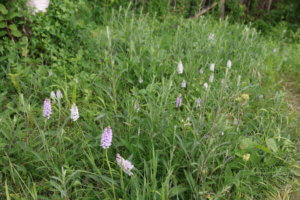
Common they may be but these sure are beautiful. They are the most numerous orchids at the Ragpits but the pale pink flowers spotted with dark pink are pretty up close and especially so en masse here.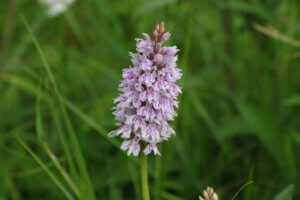
Chalk Fragrant Orchid – Gymnadenia conopsea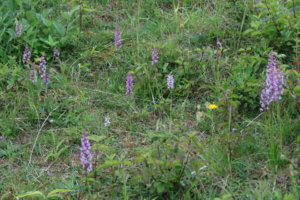
I’m hoping I’ve identified these correctly but they looked taller and more elegant than the Common spotted orchids, with the flowers more widely spaced down the stem, rather than forming a tight conical shape.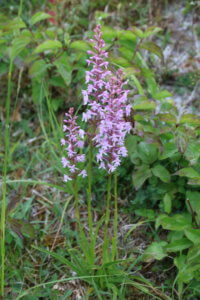
I only noticed the difference when I got home so I now regret not taking a closer look, or indeed smelling the flowers to see if they do indeed have a fragrance.
Greater Butterfly Orchid – Platanthera chlorantha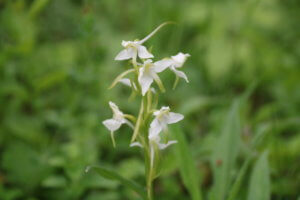
The green white flowers of this do have a butterfly- like appearance, more recognisable as they are very widely spaced at the top of the stem. I had some trouble distinguishing this from the Lesser Butterfly Orchid as the only difference is the location of the pollen sacs within the flower. They are V shaped in the Greater and parallel in the Lesser.
Bee Orchid – Ophrys apifera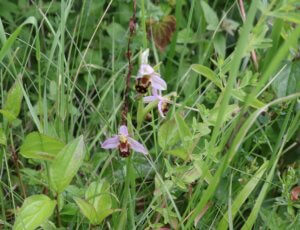
These aren’t numerous at the rag pits but they can be found. My wild flower book describes these as “vaguely bumblebee-like” which isn’t a ringing endorsement of the naming but the deep maroon, slightly furry swollen lower sepal does have the shape of a bumble and does have yellow markings.
Pyramidal Orchid – Anacampsis pyramidalis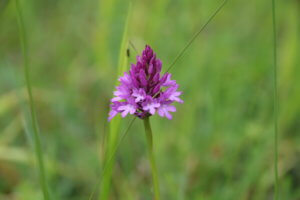
These shocking pink flowers are very pretty conical shaped groupings of flowers, especially when immature. They do then grow to have a shape similar to the Common Orchid but usually retain a darker pink colour.
Roman snails – Helix pomatia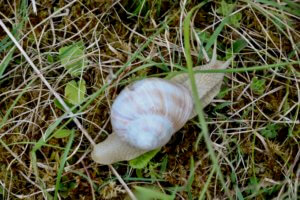
This is the largest snail found in the UK, the shells growing up to 4.5 cm. The BBOWT describes them as growing to the size of a golf ball, which is a good description. The name is thought to derive from their introduction to the UK by the ancient Romans but their populations are thought to have been boosted by “farming” in monasteries for food in the Medieval times. These snails are widespread in Europe and are what will arrive on your plate if you order ‘Esgargot’.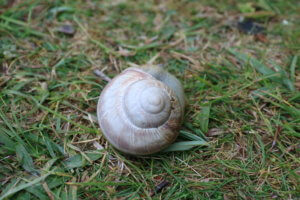
I saw several of these meaty fellows at the Ragpits, crawling slowly across the paths. They were easy to spot as they are big and a very pale grey with distinctive beige banding on the shell. I’m not a massive fan of snails in my garden but there was something very charming about them here.
Reading up on these online I discovered that they hibernate over winter, having dug a hole into which to crawl. The soft chalky soil at the Ragpits must suit them well. I also read that they tend to stay in a very local area and it’s thought that they don’t stray beyond a radius of 30 metres. They obviously like their Ragpit home.
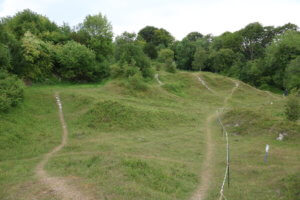
This seasonal diary is part of a weekly link-up of garden bloggers from around the world, called Six on Saturday. For more information and links to other blogs crammed with gardening activity, check the blog of host The Propagator.
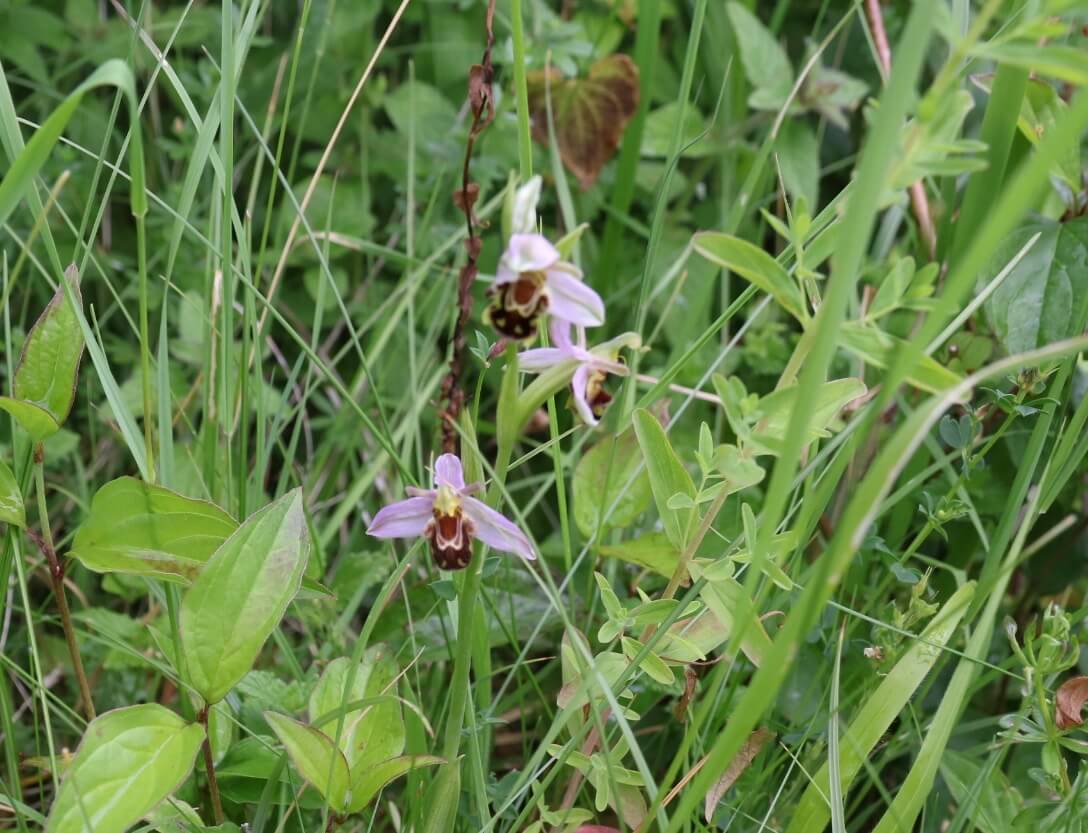
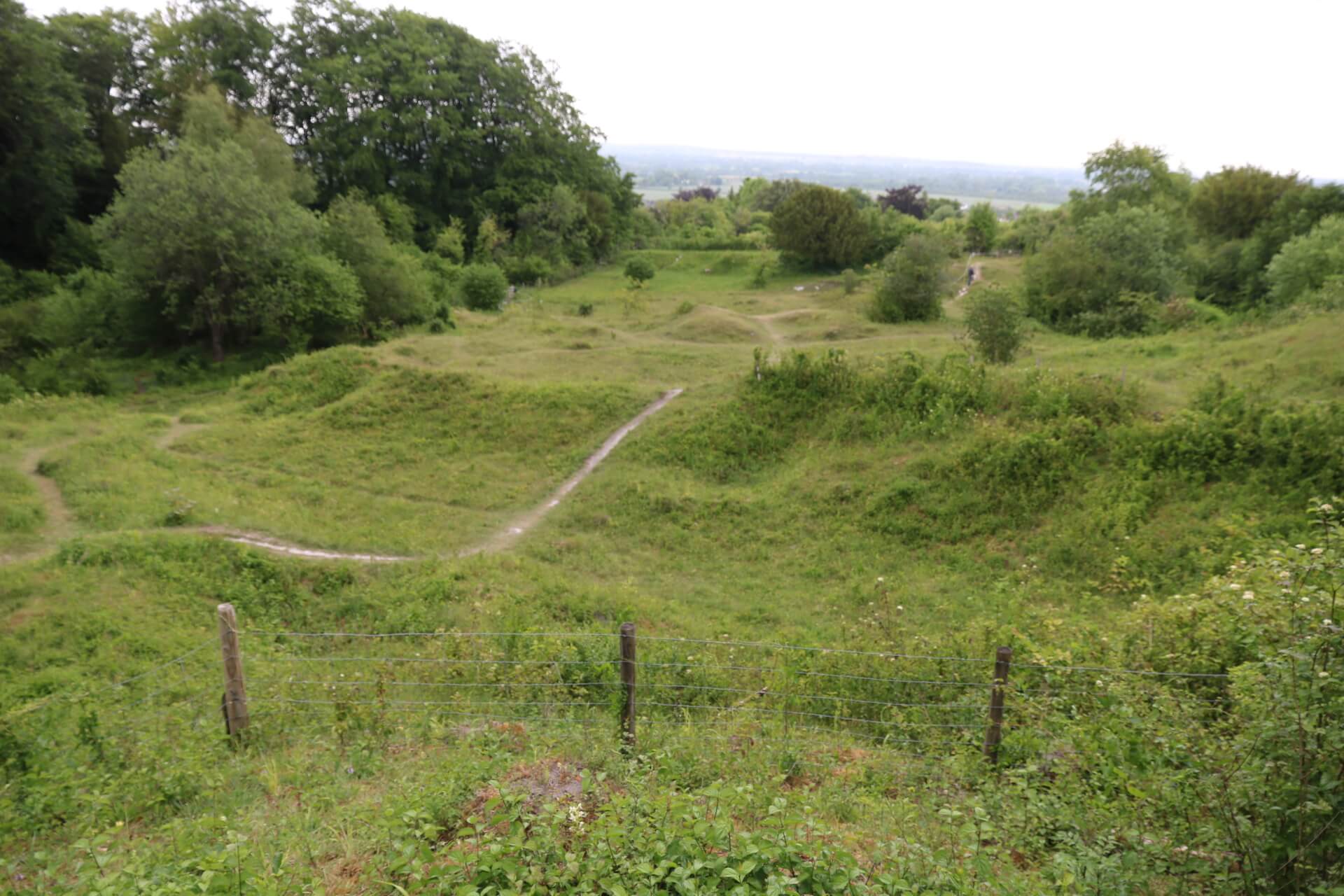
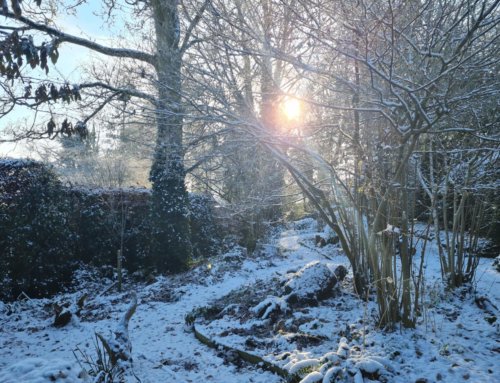
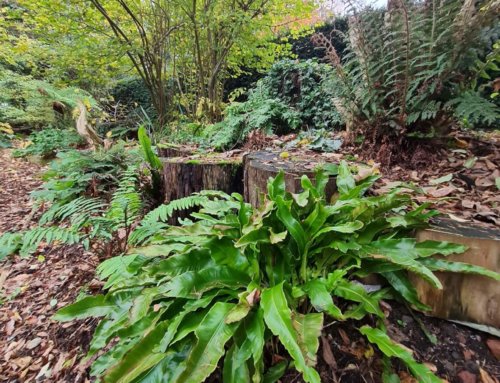
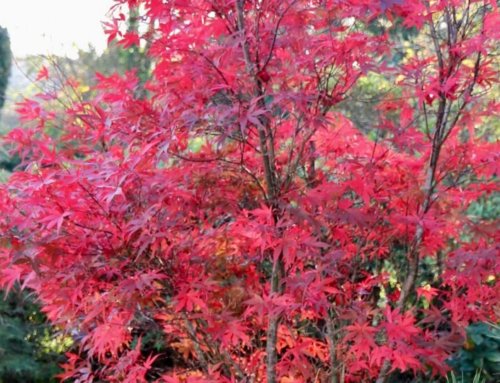
What an interesting post, and obviously an interesting and enjoyable day out for you. It’s been lovely to have a look at the various types of wild orchids.
Thanks Catherine – I’m glad I did something a bit different this week. I was only at the reserve for 40 minutes but really enjoyed the change of scene.
I’m not quite sure why but I have a field and site guide to Orchids of Britain and Ireland. Chalk areas are much richer in species than the acid moorlands of the west country so I don’t get to use it a lot. I have heath spotted orchid in my garden though, plus a couple more small seedlings that I haven’t identified yet. Most of the places I know orchids to grow in down here seem to be precarious for one reason or other; I’ve seen colonies destroyed on a couple of occasions and partially sprayed with weedkiller on another. Glad to know that they’re well protected in some places.
It’s so sad when such colonies are destroyed. The BBOWT really do a great job round here and there’s even a little reserve in my village that they look after. Apparently there is a flower called the Chiltern Gentian that grows there but I’m yet to spot it.
Your lovely post is a breath of fresh, wild air today! Thank you.
Thanks so much. It’s nice to have a change of scene!
Thanks for an enjoyable trip out. The Bee orchid is aptly named – when I first saw the photo appear at the top of the page, I thought it was just that – a bee on a flower.
I see what you mean!